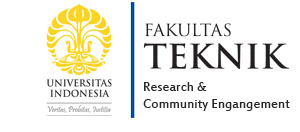| Authors | Cindy Priadi, Adeline Bourgeault, Sophie Ayrault, Catherine Gourlay-France, Marie-Helene Tusseau-Vui |
|---|---|
| Publication Name | Environmental Science: Processes & Impacts |
| Abstract | In order to obtain representative dissolved and solid samples from the aquatic environment, a spectrum of sampling methods are available, each one with different advantages and drawbacks. This article evaluates the use of discrete sampling and time-integrated sampling in illustrating medium-term spatial and temporal variation. Discrete concentration index (CI) calculated as the ratio between dissolved and solid metal concentrations in grab samples are compared with time-integrated concentration index (CI) calculated from suspended particulate matter (SPM) collected in sediment traps and labile metals measured by the diffusive gel in thin films (DGT) method, collected once a month during one year at the Seine River, upstream and downstream of the Greater Paris Region. Discrete CI at Bougival was found to be significantly higher than at Triel for Co, Cu, Mn, Ni and Zn, while discrete metal partitioning at Marnay was found to be similar to Bougival and Triel. However, when using time-integrated CI, not only was Bougival CI significantly higher than Triel CI, CI at Marnay was also found to be significantly higher than CI at Triel which was not observed for discrete CI values. Since values are time-averaged, dramatic fluctuations were smoothed out and significant medium-term trends were enhanced. As a result, time-integrated concentration index (CI) was able to better illustrate urbanization impact between sites when compared to discrete CI. The impact of significant seasonal phenomenon such as winter flood, low flow and redox cycles was also, to a certain extent, visible in time-integrated CI values at the upstream site. The use of time-integrated concentration index may be useful for medium- to longterm metal studies in the aquatic environment. |
| Publisher | Royal Society of Chemistry (RSC) |
| ISSN | 20507887 |
| Page | 1470-1479 |
| Volume | 13 |
| Impact Factor (JCR) | 2401 |
| SJR | 981 |
| Ranking Quartile | Q1 |
| Website | http://www.rsc.org/journals-books-databases/about-journals/environmental-science-processes-impacts/?e=1 |
Spatio-temporal variability of solid, total dissolved and labile metal: passive vs. discrete sampling evaluation in river metal monitoring
LATEST POST
CALL FOR PROPOSAL: Penerimaan Hibah Seed Funding Publikasi FTUI 2025
CALL FOR PROPOSAL: Penerimaan Hibah Osaka Gas Tahun 2025
6 Dosen Fakultas Teknik Universitas Indonesia Catatkan 8 Paten
Mahasiswa FTUI Kaji Potensi Hidrogen Alami di Sulawesi, Didorong Jadi Rujukan Kebijakan Nasional
Mahasiswa FTUI teliti potensi hidrogen geologis pertama di Indonesia
POPULAR NEWS
LATEST VIDEOS
LOGIN






